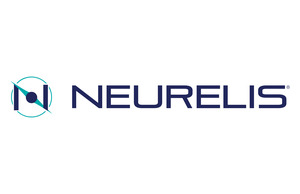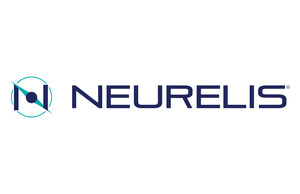- Quality of life and overall duration of seizures data with use of VALTOCO® (diazepam nasal spray) CIV to be presented at AAN
SAN DIEGO, April 25, 2023 /PRNewswire/ -- Neurelis, Inc. will present four posters from the completed long-term, open-label, repeat-dose safety study of VALTOCO for the treatment of episodes of frequent seizure activity (i.e., seizure clusters) in patients with epilepsy ages 6 to 65 years. These presentations will highlight quality of life, safety of concomitant cannabidiol (CBD) usage, time to treatment, and significant changes in SEIzure InterVAL (SEIVAL). The posters will be presented at the 75th Annual Meeting of the American Academy of Neurology (AAN) in Boston, April 22 to 27, in a hybrid format, with participants joining in person, or live online.
VALTOCO, a nasal spray for acute treatment of episodes of frequent seizure activity in adult and pediatric patients 6 years of age and older, was approved by the U.S. Food and Drug Administration (FDA) on Jan. 10, 2020.
"Expanding the clinical profile of VALTOCO is integral to our commitment to improve outcomes for patients with seizure clusters," said Enrique Carrazana, M.D., Neurelis Chief Medical Officer. "We are pleased to have the opportunity to share additional clinical evidence supporting the safety and efficacy of VALTOCO with patients, physicians, and organizations in the healthcare industry attending AAN."
Details of the selected poster presentations are below and available online to review at the American Academy of Neurology Annual Meeting website:
- SEIzure InterVAL (SEIVAL) Between Seizure Clusters and Quality of Life Across Time From a Phase 3 Safety Study of Diazepam Nasal Spray for Seizure Clusters; Poster #002, Tuesday, April 25th, 5:30 PM - 6:30 PM ET.
No change was observed in the overall quality of life (QoL) during a phase 3 study of diazepam nasal spray and the long-term effect of intermittent rescue therapy on SEIVAL. However, key QoL domains of Seizure Worry and Social Functioning clinically improved over time, which paralleled increases in SEIVAL. - Concomitant Cannabidiol Does Not Impact Safety and Effectiveness of Diazepam Nasal Spray for Seizure Clusters: Post Hoc Analysis of a Phase 3 Safety Study; Poster #012, Tuesday, April 25th, 5:30 PM – 6:30 PM ET.
Results from a phase 3 safety study suggest that CBD did not alter safety/effectiveness of diazepam nasal spray and supported concomitant use in appropriate patients. In the cohort, it was observed that incidence of epileptic encephalopathies in patients receiving CBD may underlie the overall rates of treatment-emergent adverse events (TEAEs) in this population. - Faster Time to Treatment of Seizure Clusters With Diazepam Nasal Spray Is Associated With Faster Cessation of Clusters and a Similar Rate of Second Dose Usage; Poster #009, Tuesday, April 25th, 5:30 PM - 6:30 PM ET.
In patients treated with diazepam nasal spray during a phase 3, long-term, open-label, repeat-dose safety study, more rapid initiation of treatment with diazepam nasal spray following the start of a seizure-cluster was associated with more rapid cessation of the seizure-cluster and overall shorter seizure duration. - Significant Improvements in SEIzure InterVAL (Time Between Seizure Clusters) Across Time Irrespective of Age or Change in Concomitant Treatments in a Long-Term, Open-Label Safety Study of Diazepam Nasal Spray; Poster #010, Tuesday, April 25th, 5:30 PM - 6:30 PM ET.
A post hoc analysis of a long-term, open-label, repeat-dose safety study of diazepam nasal spray found a statistically significant change in SEIVAL over 12 months, which may reflect a beneficial effect of intermittent rescue therapy with diazepam nasal spray and appears to be independent of age or concomitant ASDs.
The 12-month Phase 3 study, which evaluated the long-term safety of VALTOCO, included 175 subjects. Out of the total subjects enrolled, there were 163 patients that were dosed; 3,853 seizures were treated with at least one dose of VALTOCO.
In granting VALTOCO Orphan Drug Exclusivity, the FDA recognized its intranasal route of administration as clinically superior to the previously approved standard-of-care treatment (DIASTAT®, a rectal gel formulation of diazepam).
"We are focused on developing solutions for patients and their care partners to manage challenging episodes of frequent seizure activity as soon as they occur," said Adrian L. Rabinowicz, M.D., Neurelis SVP Clinical Development and Medical Affairs. "The availability and deployment of an easy-to-use rescue medication that is convenient to carry and can be used discreetly in public may reduce the incidence of hospitalization in patients with seizure clusters."
In addition to the current selection of chronic, daily oral medications used to help manage seizures, there is a strong need for continued research into the positive effects of novel treatment options.
About Neurelis
Neurelis, Inc., is a commercial-stage neuroscience company focused on the development and commercialization of therapeutics for the treatment of epilepsy and orphan neurologic disorders characterized by high unmet medical need. In 2020, the FDA approved Neurelis' VALTOCO® (diazepam nasal spray) as an acute treatment of intermittent, stereotypic episodes of frequent seizure activity (i.e., seizure clusters, acute repetitive seizures) that are distinct from an individual's usual seizure pattern in adult and pediatric patients 6 years of age and older. VALTOCO is a proprietary formulation of diazepam incorporating the science of INTRAVAIL®. Intravail's transmucosal absorption enhancement technology enables the noninvasive delivery of a broad range of protein, peptide and small-molecule drugs. In its approval of VALTOCO, the U.S. Food and Drug Administration also granted Neurelis Orphan Drug Exclusivity and recognized VALTOCO's intranasal route of administration as a clinically superior contribution to patient care over the previously approved standard-of-care treatment (a rectal gel formulation of diazepam). For more information on VALTOCO, please visit www.valtoco.com. In addition, Neurelis is developing NRL-1049 (previously known as BA-1049), an investigational, Phase I stage small molecule Rho kinase (ROCK) inhibitor, for the treatment of cerebral cavernous malformations (CCMS), a rare disorder of the central nervous system (CNS). For more information on Neurelis, please visit www.neurelis.com. For the latest scientific information on VALTOCO, please visit http://www.neurelismedicalaffairs.com/.
Important Safety Information about VALTOCO:
Indication
VALTOCO® (diazepam nasal spray) is indicated for the acute treatment of intermittent, stereotypic episodes of frequent seizure activity (ie, seizure clusters, acute repetitive seizures) that are distinct from a patient's usual seizure pattern in patients with epilepsy 6 years of age and older.
WARNING: RISKS FROM CONCOMITANT USE WITH OPIOIDS; ABUSE, MISUSE, AND ADDICTION; and DEPENDENCE AND WITHDRAWAL REACTIONS
|
Contraindications: VALTOCO is contraindicated in patients with:
- Hypersensitivity to diazepam
- Acute narrow-angle glaucoma
Central Nervous System (CNS) Depression
Benzodiazepines, including VALTOCO, may produce CNS depression. Caution patients against engaging in hazardous activities requiring mental alertness, such as operating machinery, driving a motor vehicle, or riding a bicycle, until the effects of the drug, such as drowsiness, have subsided, and as their medical condition permits.
The potential for a synergistic CNS-depressant effect when VALTOCO is used with alcohol or other CNS depressants must be considered, and appropriate recommendations made to the patient and/or care partner.
Suicidal Behavior and Ideation
Antiepileptic drugs (AEDs), including VALTOCO, increase the risk of suicidal ideation and behavior. Patients treated with any AED for any indication should be monitored for the emergence or worsening of depression, suicidal thoughts or behavior, and/or unusual changes in mood or behavior.
Glaucoma
Benzodiazepines, including VALTOCO, can increase intraocular pressure in patients with glaucoma. VALTOCO may only be used in patients with open-angle glaucoma only if they are receiving appropriate therapy. VALTOCO is contraindicated in patients with narrow-angle glaucoma.
Neonatal Sedation and Withdrawal Syndrome
Use of VALTOCO late in pregnancy can result in sedation (respiratory depression, lethargy, hypotonia) and/or withdrawal symptoms (hyperreflexia, irritability, restlessness, tremors, inconsolable crying, and feeding difficulties) in the neonate. Monitor neonates exposed to VALTOCO during pregnancy or labor for signs of sedation and monitor neonates exposed to VALTOCO during pregnancy for signs of withdrawal; manage these neonates accordingly.
Risk of Serious Adverse Reactions in Infants due to Benzyl Alcohol Preservative
VALTOCO is not approved for use in neonates or infants. Serious and fatal adverse reactions, including "gasping syndrome," can occur in neonates and low-birth-weight infants treated with benzyl alcohol–preserved drugs, including VALTOCO. The "gasping syndrome" is characterized by central nervous system depression, metabolic acidosis, and gasping respirations. The minimum amount of benzyl alcohol at which serious adverse reactions may occur is not known.
Adverse Reactions
The most common adverse reactions (at least 4%) were somnolence, headache, and nasal discomfort.
Diazepam, the active ingredient in VALTOCO, is a Schedule IV controlled substance.
To report SUSPECTED ADVERSE REACTIONS, contact Neurelis, Inc. at 1-866-696-3873 or FDA at 1-800-FDA-1088 (www.fda.gov/medwatch).
Please read full Prescribing Information, including Boxed Warning.
Contacts:
Neurelis:
Brittany Bradrick, Chief Operating Officer and Chief Financial Officer, +1 858 251 2135
Media:
Glenn Silver, FINN Partners, +1 646 871 8485
SOURCE Neurelis, Inc.

WANT YOUR COMPANY'S NEWS FEATURED ON PRNEWSWIRE.COM?
Newsrooms &
Influencers
Digital Media
Outlets
Journalists
Opted In






Share this article